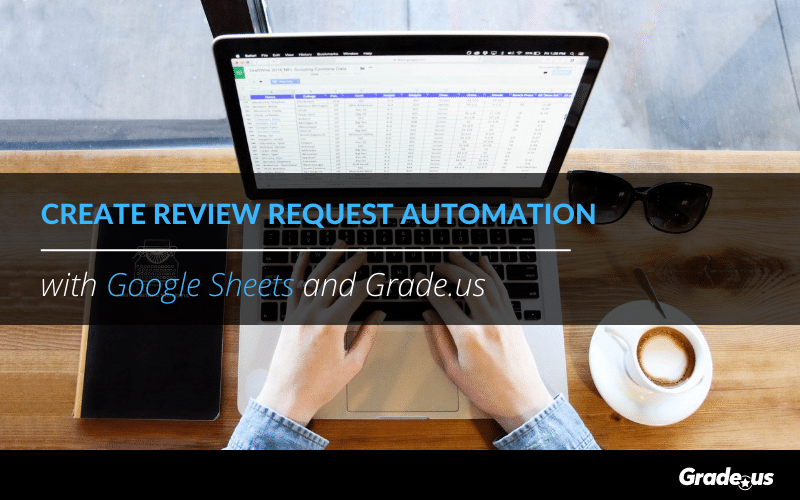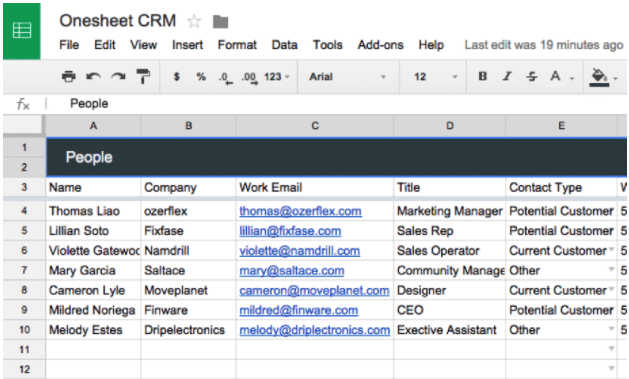Eighty-four percent of companies use spreadsheets.
According to Forrester, the majority of companies surveyed rely on spreadsheets as an essential part of their business. According to Axios, Google’s G-Suite has more than 2 billion monthly active users.
Maybe you’re one of them?
As you’ll soon see, this is a two-edged sword.
Why most companies rely on spreadsheets
It’s a convenient option for businesses.
Spreadsheets are low cost with a low barrier of entry. They don’t require a lot of training. They’re collaborative tools, and it’s a great way to store data. There’s significantly less transitional pain because so many people are familiar with spreadsheet tools like Google Sheets.
So what’s the problem?
The problem for most companies is growth. As companies grow, spreadsheet tools become a problem for various reasons.
Here’s why.
- Inconsistent formats: Google Sheets, Microsoft Excel, and other tools – they all do things a bit differently. Sometimes these differences are minor other times, they’re major. They use different commands, hotkeys, etc. This is simple to manage in a smaller organization, but it’s difficult to handle as your company grows, especially if various divisions use Google Sheets while others use Excel.
- Conflicting skill sets: Imagine that your junior developer is a power user. He decides to add advanced Google Apps scripts to extend the functionality of Google Sheets. Instantly, they’re able to do incredible things with your spreadsheets. Does anyone else know how to use what they’ve done? If a small, select group of people know how to use your spreadsheet properly, this will create problems in the future.
- Poor process management: Imagine that certain things need to happen when a customer or client requests a product or service. When a customer purchases a product, we’ll add them to the [new customer] autoresponder sequence, etc. This isn’t something that can be done natively in spreadsheets.
Am I suggesting that you stop using Google Sheets?
Not at all.
In fact, I’m recommending that you use Google Sheets to improve customer retention. How are you supposed to do that exactly?
By removing layers of redundancy.
I’ll be discussing this from the standpoint of reputation management, but this could just as easily apply to other disciplines — fulfillment, support, marketing, etc.
Picture your list of customers.
What happens when these prospects become customers?
A lot should happen.
If you’re focused on improving the customer experience (CX), you’ll want to gather customer feedback.
- How did we do?
- Did we make you happy?
- What sort of challenges did you experience in the order process?
- How can we improve?
And there lies the problem. If you’re using Google Sheets, you have the data, but it can’t do anything on its own. If you’re looking for answers to these questions, you’ll need a system in place that pursues these answers for you.
That’s where Grade.us comes in.
Integrating Google Sheets and Grade.us
We’ve recently integrated Grade.us with Google Sheets, making it easy to automate the review request process. Here’s a step-by-step walk-through to show you how to integrate Google Sheets with your Grade.us account.
Google Sheets is a spreadsheet alternative to Microsoft Excel.
If you have a Google account, you already have access to Sheets. Need to create a new account? Visit Google.com/sheets/ to sign up.
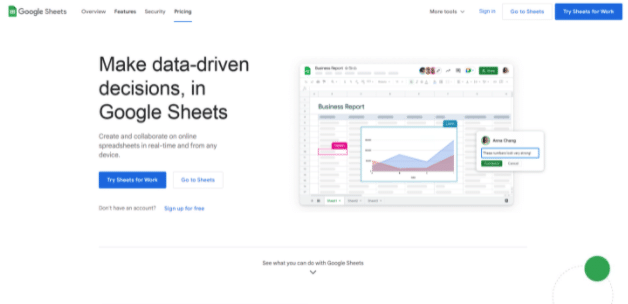
Here are some steps you can take to integrate Grade.us and Google Sheets.
- Sign in to your Grade.us account. Click the “Integrations” tab on the left sidebar in your desired account. You should see Google Sheets in the list of integrations.
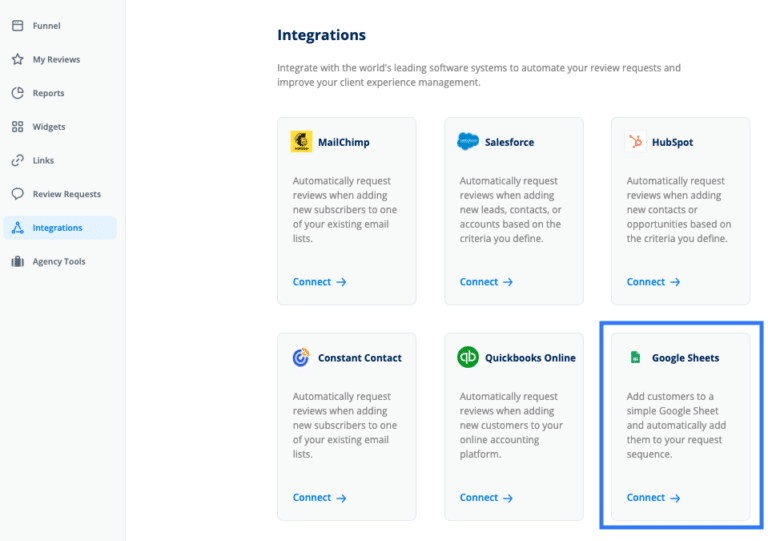
2. Select ” Google Sheets ” as the application you want to integrate.
3. Click “Connect” to start the authorization process.
4. Click “New Authentication” to name your import, then click “Create.”
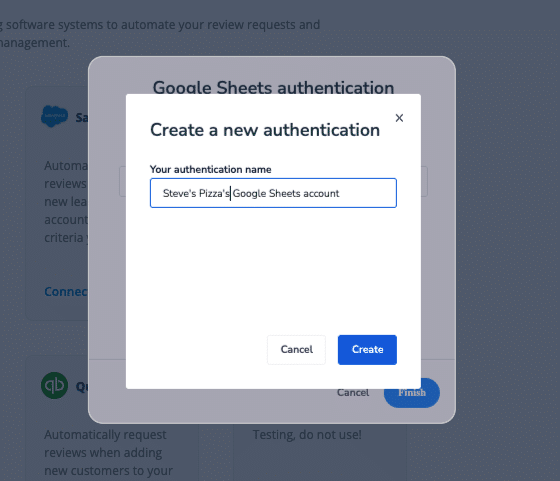
5. A new window will open, prompting you to sign in to your Google Sheets account. Follow the steps to authenticate and name your integration.
6. Once you’re signed in, you see a confirmation success message. Click “Finish” to complete the process.
From there, you should see a Google Sheet in your Google Drive with the title “ReviewManager Recipients.”
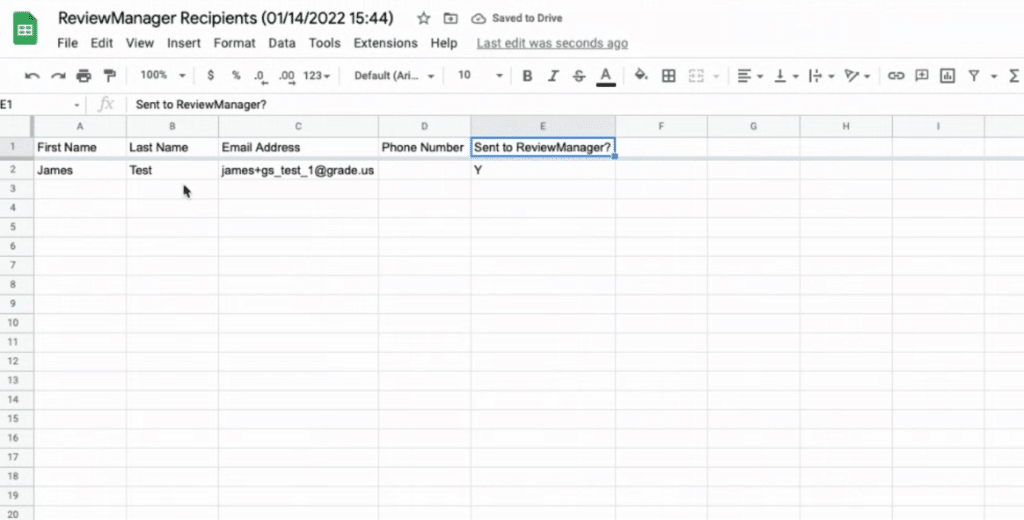
Anytime you add a customer to this Google Sheet that customer’s info will be automatically pushed to Grade.us and entered into your email or text review request campaign.
You can:
- Add customers to your review funnel
- Request reviews
- Send review links and reminders
Note: It’s important that users do not change the column headers or the tabs’ names. Users can change the document name if they choose to.
This is significant because it eliminates redundancy, makes your spreadsheet data actionable, and gives you a tool you can use to request (and earn) reviews from customers. Another thing that’s great about this is the reporting. With Grade.us, you can export campaign and performance reports in CSV formats, so it’s ready for analysis using tools like Power BI, Tableau, and others.
Your data continues to add value.
Using reputation management to boost customer retention
Reviews come with added benefits.
Buyers spend more and stay longer. The Wharton School of Business found the customers you win via word-of-mouth have a 16 to 25 percent higher lifetime value than customers from other sources.
That’s significant.
But why is this the case? A strong review portfolio attracts quality buyers, producing high-quality leads. These buyers are more focused on value. They’re less interested in haggling over price or hammering you for discounts.
Why?
Because customers have vouched for you.
You’re viewed as a safer bet. This is true for everyone — agencies, clients, and independent businesses. Here’s the best part about all of this. The customer data you’ve imported from Google Sheets into Grade.us (and reviews you’ve received as a result) will continue to bear fruit.
Your online reviews can be used at any stage of your marketing funnel.
Use reviews to attract buyers.
- Share reviews via a remarketing campaign as a way to attract interested buyers
- Promote reviews via direct response channels like Bing, Google Ads, and Facebook Ads
- Use reviews to attract new subscribers via email or social media
Use reviews to convert buyers
- Convert customers via direct response, search, social, and remarketing campaigns
- Use reviews to win new customers via joint venture partnerships and affiliate campaigns
- Sell new email, SMS, and social media subscribers on a product, service, or system using buyer beliefs
Use reviews to retain customers
- Show buyers the results, outcomes, and rewards customers have achieved with your product or service
- Sell existing customers on new features or services via success stories from other happy customers
- Pre-sell new products and services by embedding reviews on your sales pages; use them to gain traction before you’ve launched or released your next offering
Most companies rely on spreadsheets
Eighty-four percent of companies use spreadsheets.
Is your customer data working as hard for you as it could be? Google Sheets is a phenomenal tool and a significant game-changer. It becomes an indispensable tool when you combine it with reputation management tools.
It’s an easy way to plug revenue leaks.
The data inside your spreadsheets is valuable. If you put your customer data to work, you’ll have all the leverage you need to boost customer happiness and retention.
Click here to view the Grade.us Google Sheets how-to article.

